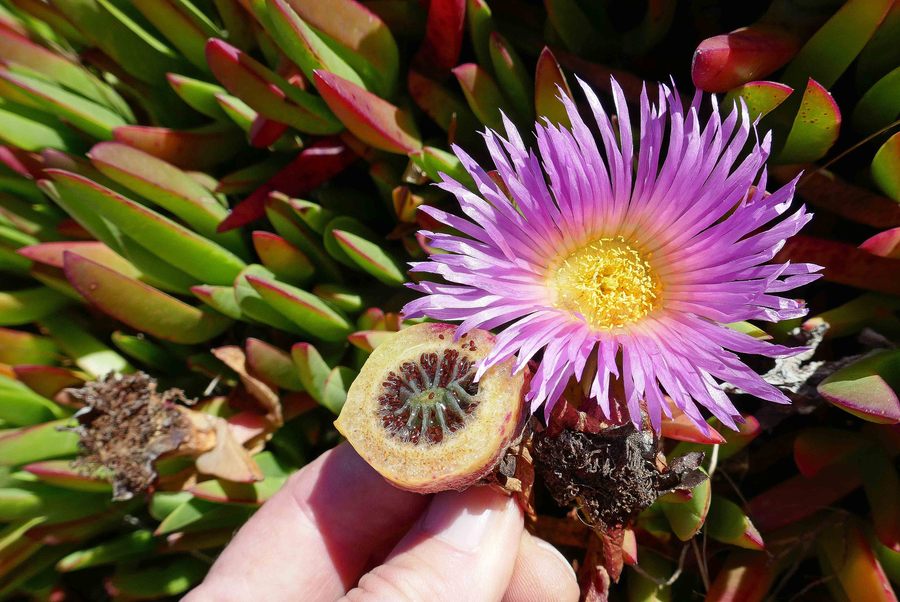
Carpobrotus edulis Profile California Invasive Plant Council
Carpobrotus edulis grow and care - succulent creeping subshrub of the genus Carpobrotus also known as Ice plant, Carpobrotus edulis perennial evergreen plant, used for edible the fruits and edible leaves but mostly used as ornamental drought tolerant plant and ground cover plant, can grow in subtropical, mediterranean, tropic, desert or temperat.
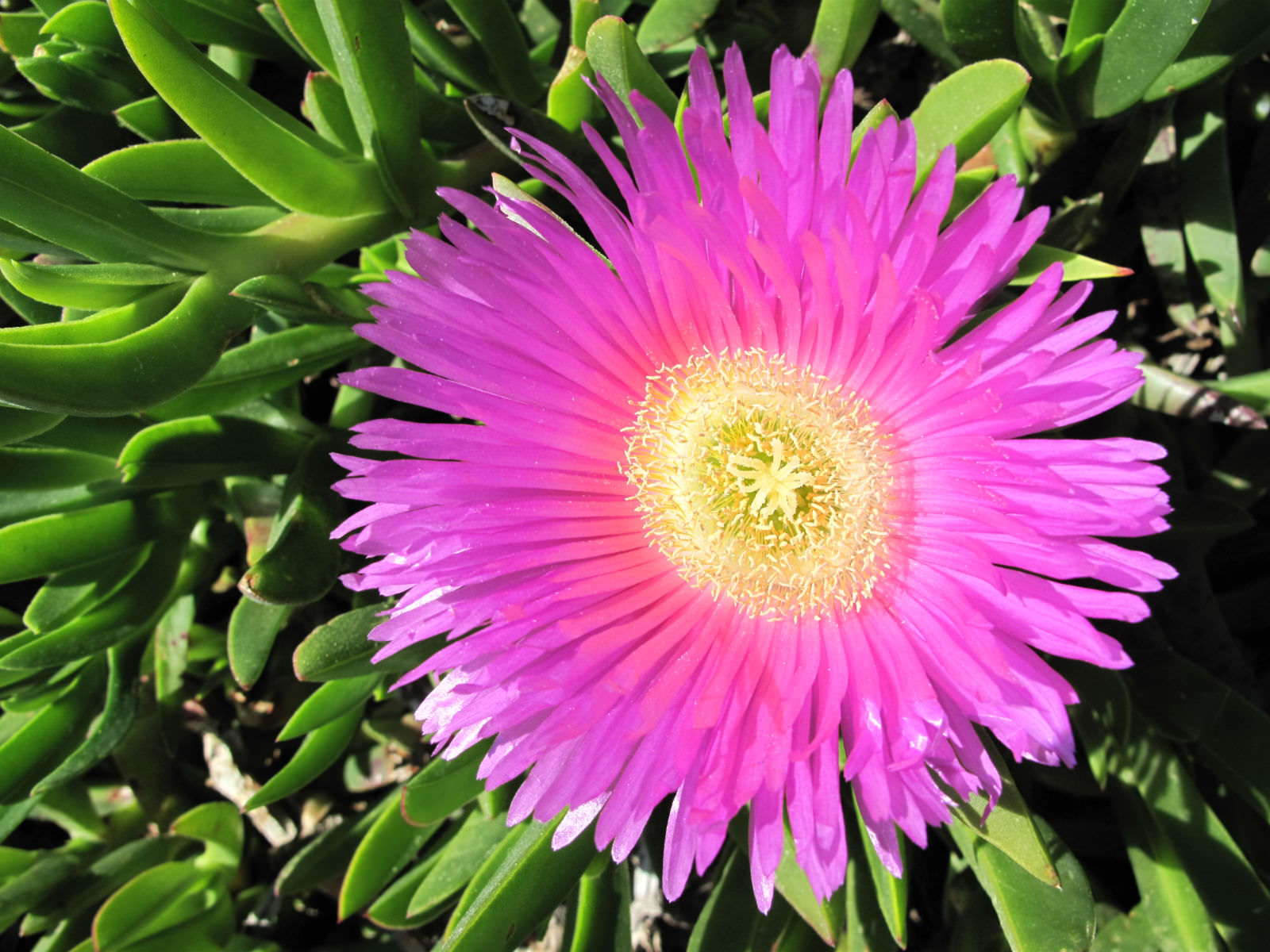
How to Grow and Care for Carpobrotus World of Succulents
Genus. Carpobrotus. Family Aizoaceae. Description: Prostrate and spreading perennials with long trailing stems rooting at the nodes. Leaves succulent, opposite, sessile, triangular in cross section, glabrous, with pellucid glands. Flowers solitary, terminal on lateral branches, usually large, purple or light purple, rarely yellow.
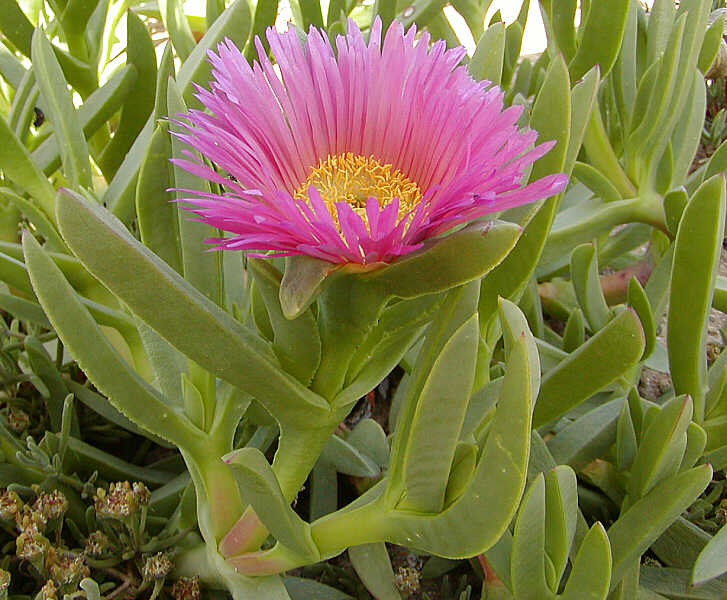
Carpobrotus edulis Alchetron, The Free Social Encyclopedia
Common name: Glaucous Pigface Carpobrotus edulis (L.) N.E.Br. APNI* Description: Prostrate perennial with stems to 2 m long. Leaves 4-8 cm long, 8-17 mm wide, slightly incurved, dark green. Flowers 7-8.5 cm diam., pedicellate. Perianth tube 15-25 mm long and wide; lobes 5, the 2 longer 20-45 mm long.

Carpobrotus edulis (Aizoaceae) image 49921 at
The edulis plant puts down roots as it spreads and grows fast with proper care. It is recommended for USDA Hardiness 7 - 10. Watering and Feeding. To ensure the Carpobrotus grows well, plant it in sandy soil, well-drained, in a partially shaded area. The plant can grow on dry walls and can remain resilient during droughts.

Carpobrotus edulis (L.) N.E.Br. Plants of the World Online Kew Science
Carpobrotus edulis is an easy-to-grow succulent groundcover, ideal for low-maintenance and water-wise gardens. It is also a useful first-aid plant with edible fruits for the herb or kitchen garden. Description A robust, flat-growing, trailing perennial, rooting at nodes and forming dense mats.

Carpobrotus Edulis Succulent Plant Stock Photo Image of hottentot, creeper 154279400
Come and check all categories at a surprisingly low price, you'd never want to miss it. Awesome prices & high quality here on Temu. New users enjoy free shipping & free return.

Carpobrotus edulis (L.) N.E.Br. Plants of the World Online Kew Science
Carpobrotus is a genus of ground-creeping plants with thick fleshy leaves and large daisy-like flowers. The name refers to edible fruits. It comes from the Ancient Greek "karpos," meaning "fruit," and "brota," meaning "edible." Plants in the genus are commonly known as Pigface, Ice Plant, or Hottentot Plant. The genus includes about 20 accepted.
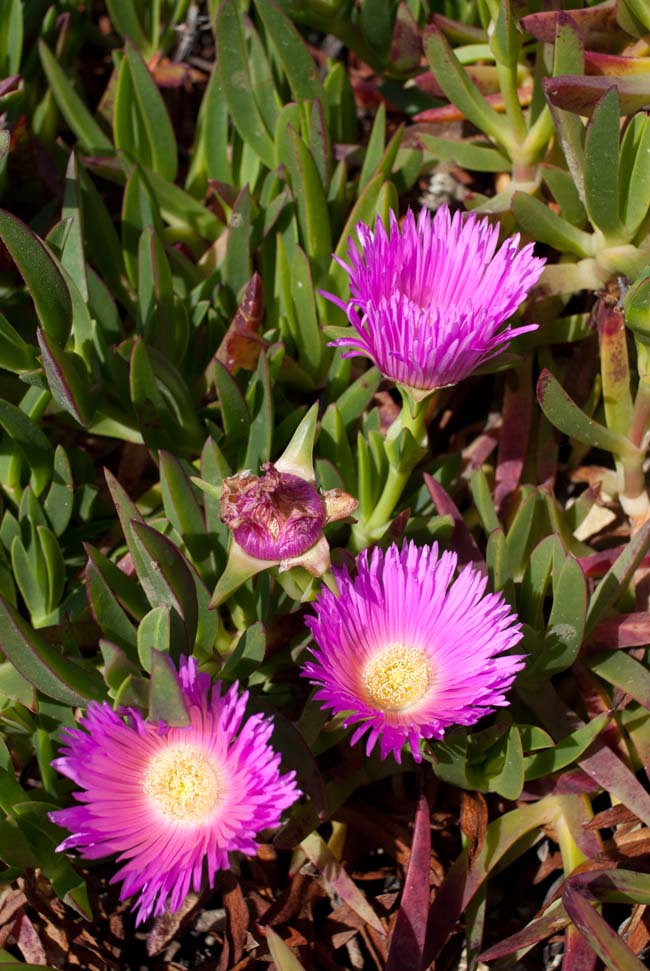
Hottentot Fig, Carpobrotus edulis
Carpobrotus edulis is a subtropical species of mainly coastal regions. It can succeed in the drier parts of the tropics and subtropics, and also in the warmer parts of the temperate zone. Plants are not very cold tolerant and can be killed by temperatures below about -2°c. Requires a well-drained sandy soil in a sunny position [.

Carpobrotus edulis (Highway Ice Plant) World of Succulents
How to Propagate Carpobrotus Edulis 'Hottentot Fig' Using Seeds. This succulent type is a slow grower so even if it can be propagated by its seeds, this method is not recommended. To propagate from the seeds, plant the seeds in a well-draining soil mixture. This method can be used outdoors. In cooler areas, indoor propagating is recommended.
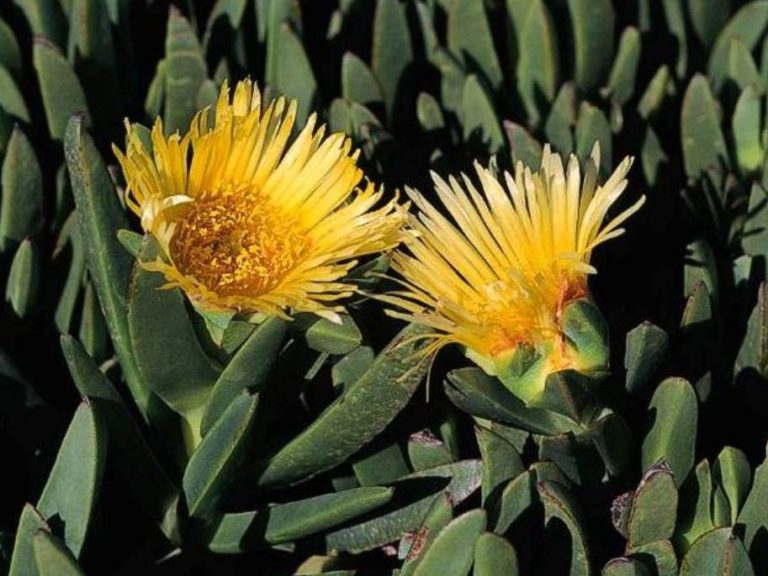
Carpobrotus edulis Profile California Invasive Plant Council
D'Antonio, C.M. (1993) Mechanisms controlling invasion of coastal plant communities by the alien succulent Carpobrotus edulis. Ecology, 74 (1): 83-95. D'Antonio, C.M. & Mahall, B.E. (1991) Root profiles and competition between the invasive exotic perennial Carpobrotus edulis and two native shrub species in California USA coastal shrubland.
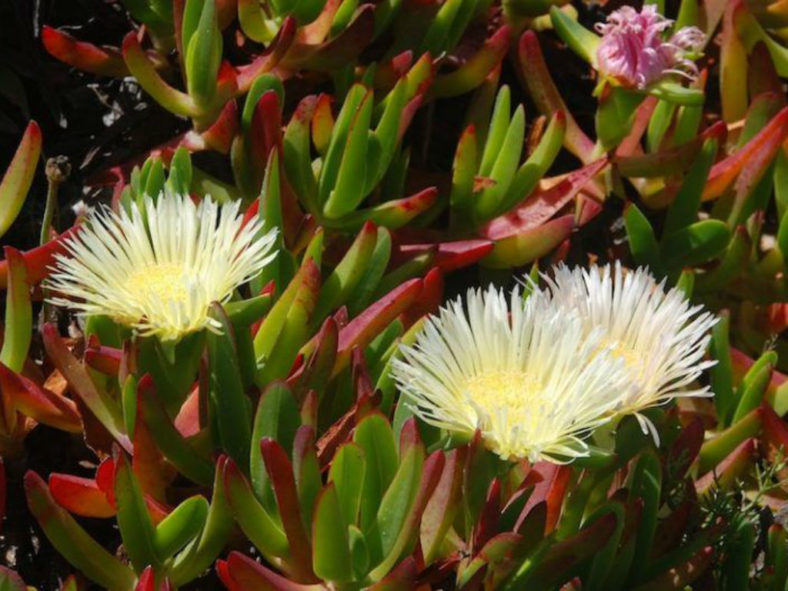
Carpobrotus edulis (Hottentot Fig) World of Succulents
Carpobrotus edulis, like many plant invaders, can affect aspects of ecosystem structure and functioning in multiple ways. Its success in taking over these environments is a function of both its ability to become abundant via seed dispersal and escape from herbivory, and its ability to grow into a dense, low-growing mat once established.

The Flower of the Carpobrotus Edulis Stock Image Image of bright, garden 142520965
Carpobrotus edulis is a mat-forming succulent with creeping stems, thick fleshy 3-angled leaves, and yellow or light pink flowers. It is easily confused with its close relatives but can be distinguished from most of them by the size and color of its flowers, which are daisy-like and up to 6 inches (15 cm) in diameter.

Carpobrotus edulis Hottentot Fig, Highway Ice Plant World of Succulents
The wild-growing plant Carpobrotus edulis ( C. edulis) is a fast-growing weed with pronounced medicinal potential 3 that flourishes along coastal areas in many parts of the world 4, such as.
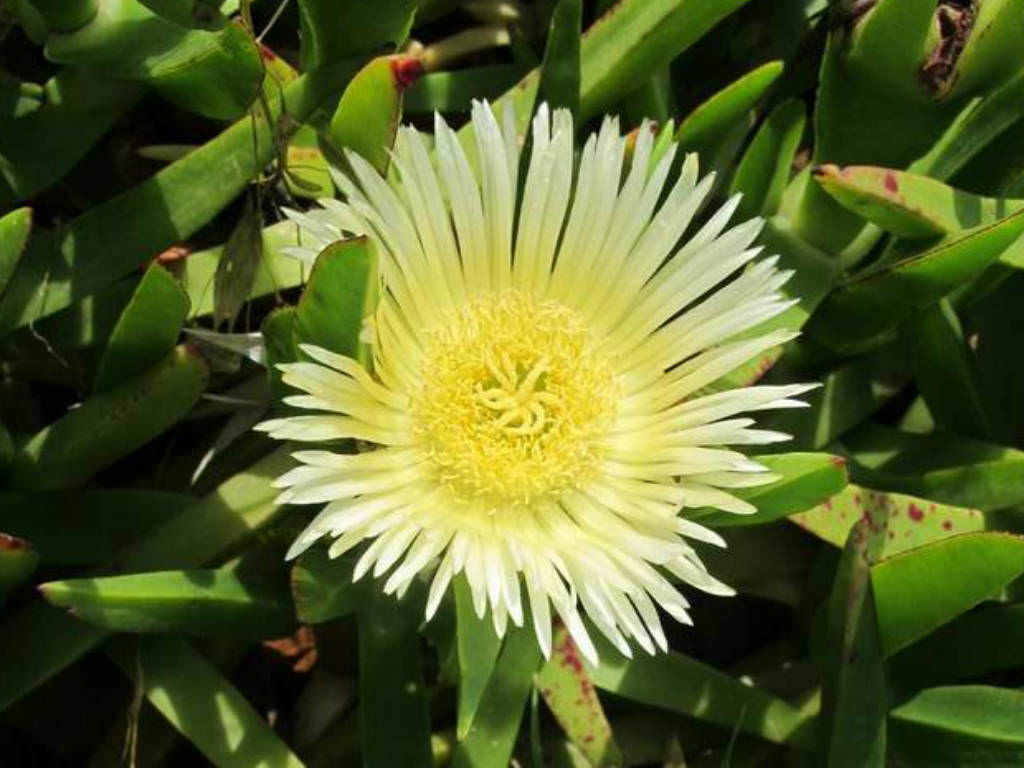
Carpobrotus edulis Hottentot Fig, Highway Ice Plant World of Succulents
Carpobrotus edulis is a ground-creeping plant with succulent leaves in the genus Carpobrotus, native to South Africa. Its common names include hottentot-fig, [1] [2] [3] [4] sour fig, ice plant or highway ice plant . Description [ edit] Carpobrotus edulis is a creeping, mat-forming succulent species.

Carpobrotus Edulis Plant in the Garden in Spring. Stock Image Image of invasive, sand 116764309
Carpobrotus edulis is a PERENNIAL growing to 0.1 m (0ft 4in) by 1 m (3ft 3in). See above for USDA hardiness. It is hardy to UK zone 8 and is frost tender.. This plant can be weedy or invasive. Carpobrotus edulis, native to South Africa, has naturalised in many other regions throughout the world, and is an invasive species in several parts.
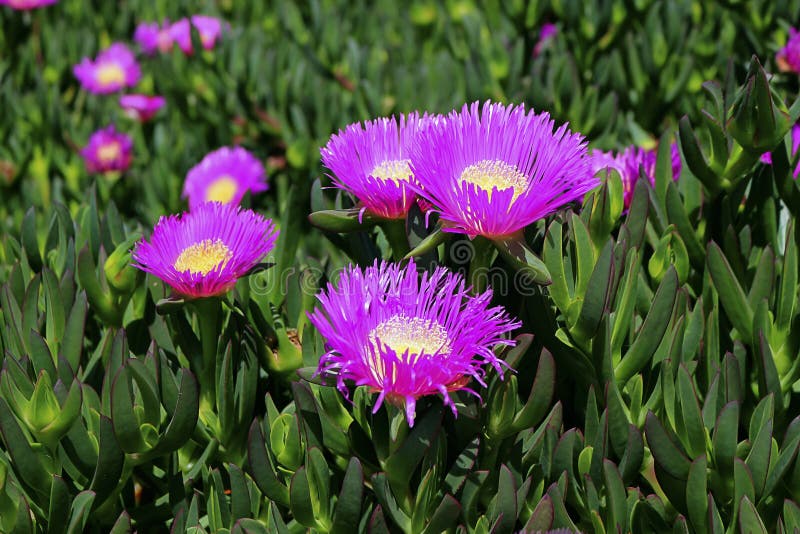
Carpobrotus Edulis Plant with Bright Pink Flowers Stock Photo Image of plant, species 184425920
Carpobrotus edulis is native to coastal areas of South Africa, which has a climate similar to coastal California. It was brought to California in the early 1900s for stabilizing soil along railroad tracks and was later used by Caltrans for similar purposes. It has also been used as an ornamental plant for home gardens.
